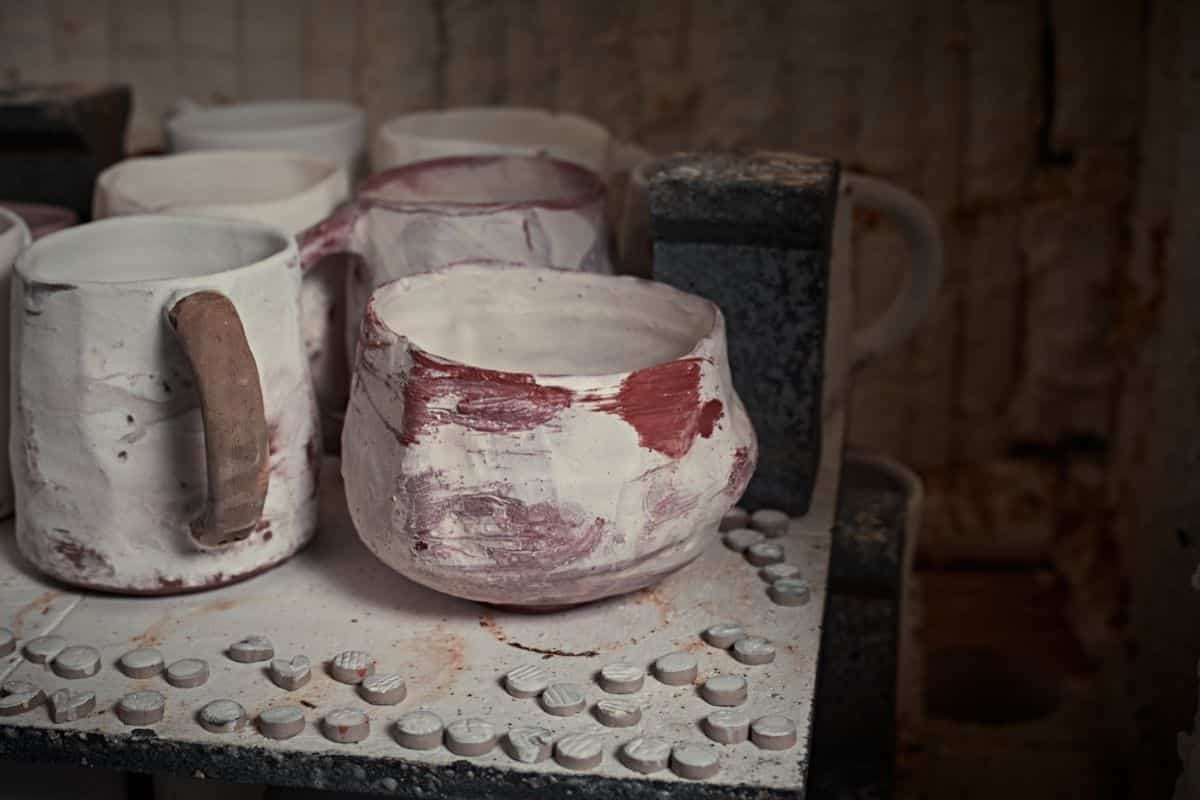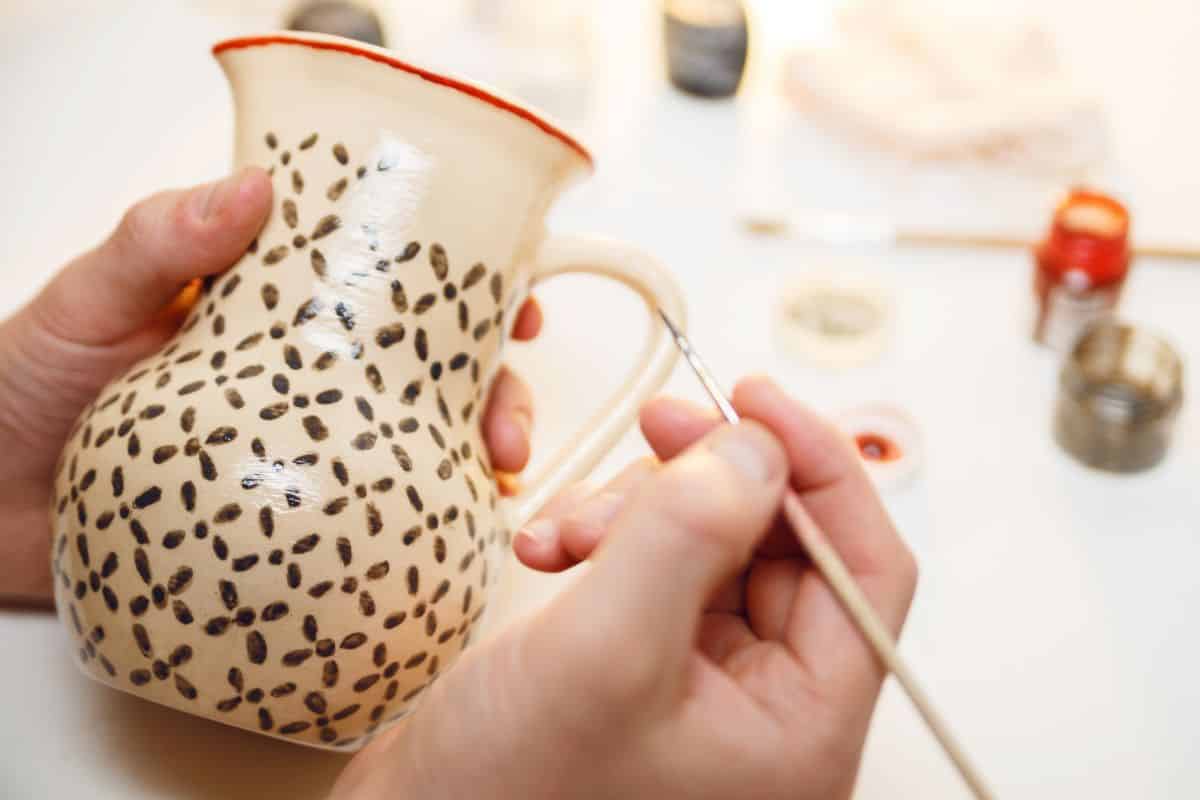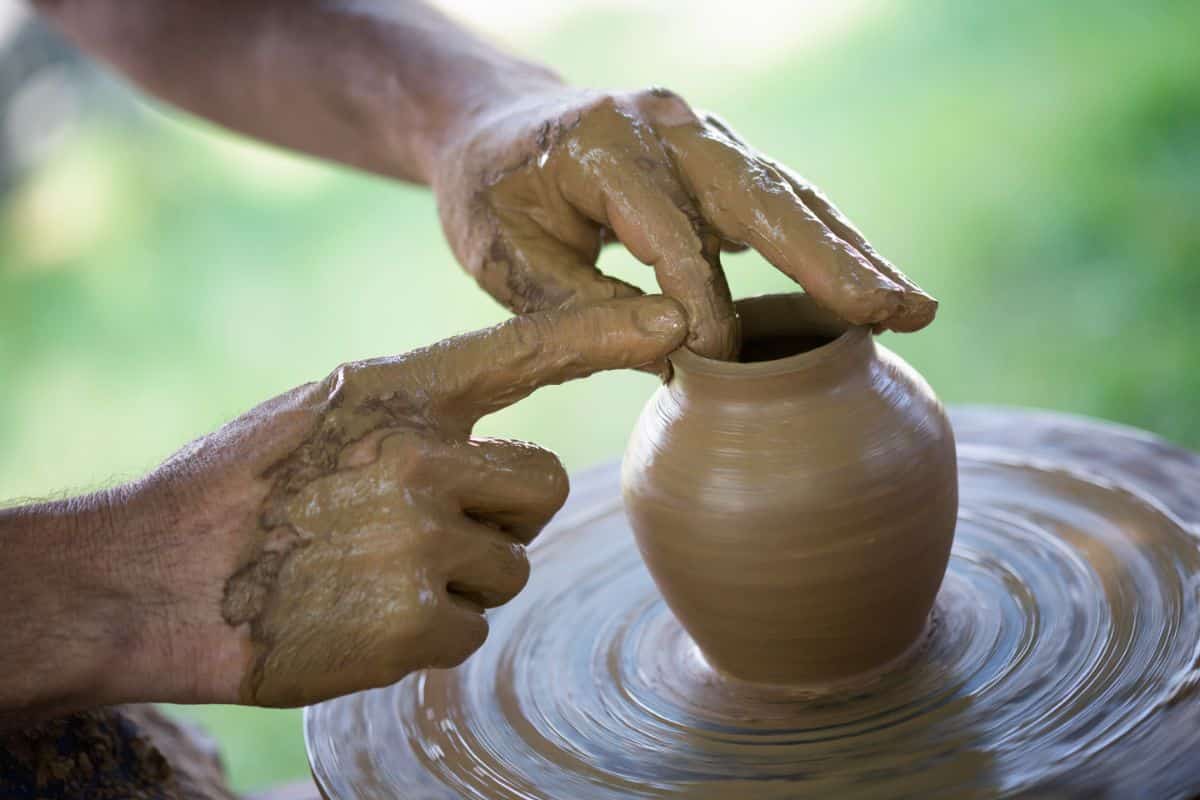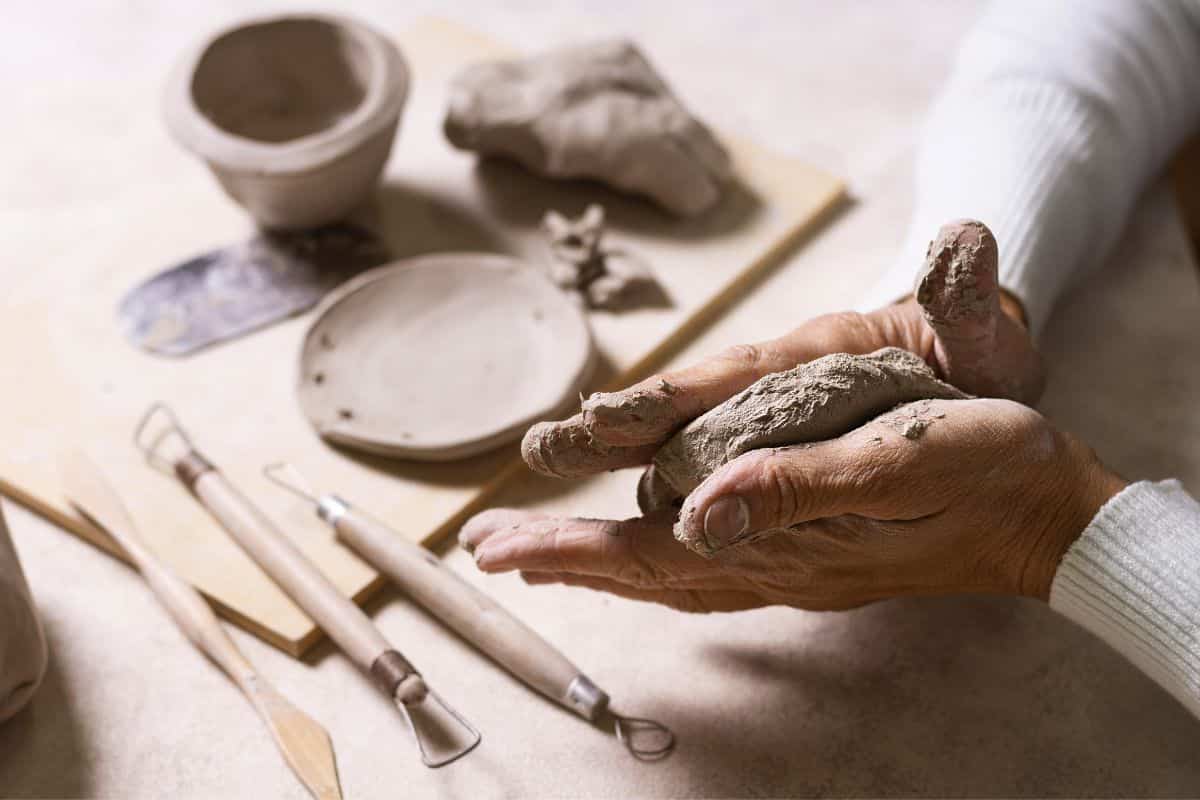When you first start out using a pottery wheel, you have to learn the basic skills of centering the clay and opening up the pot.
Once you get the hang of this, you can start to make mugs and bowls.

But what about when you want to make taller pots? How do you go from small pots to tall pots?
We have put together this list of 7 great tips for throwing taller pots on the pottery wheel. Keep reading to find out more.
To Make A Taller Pot You Need To Use More Clay
This tip might seem obvious, but a lot of people try to throw a tall pot using the same amount of clay they were using to make a short pot.
The pot will be too thin and will become very difficult to work with – you need to add more clay if you want to maintain the structural integrity of the pot whilst increasing the height of the walls.
It is better to use a little too much than not enough, especially when you are starting to experiment with tall pots.
It is easy to chop a bit off the top of the pot if you have used too much clay, and it saves you starting over if you haven’t used enough clay to begin with.
The more experience you have throwing taller pots, the more you will understand how much clay to use for each pot.
Experiment With Different Types Of Clay
Whilst the basic techniques remain the same, each potter has their own way of working with the clay to create unique pots.
Some people prefer working with certain types of clay over others as it might suit their style and the way they like to use their hands.
As you gain more experience, try and take the opportunity to work with different types of clay to see how they compare and which one provides the best results when you are trying to throw a taller pot.
Stiff Clay Often Works Best For Tall Pots
If you find that you are struggling to throw tall pots with the clay that you are using, have a go at switching to a stiffer clay.
Stiff clay can support more weight, which allows you to make taller walls of the pot without the structural integrity and stability of the pot being compromised.
The downside is that stiff clay is harder to work with – it takes more effort to manipulate, and centering it properly is more of a challenge.
With practice, you will be able to master the skill of working with stiff clay.
Using Too Much Water Can Prevent You From Throwing A Tall Pot
It is important to use water when throwing pots to prevent the clay from sticking to your hands, removing friction and making the clay more malleable.
However, the more water you use the softer the clay becomes. This can make it prone to collapse, which is a problem when it comes to trying to build tall walls.
Remember that you can always add water, but you cannot take it away. Start off with just a little bit of water and increase it gradually until the clay reaches the right consistency.
You can add the water with a sponge to give you more control over the amount of water going into the clay.
You need to add water every time you pull the wall, so it makes sense that the fewer pulls you complete the less water you will need to add and the more sturdy the pot will be.
As you become more experienced, you will be able to create your pots using fewer pulls of the wall and more precise movements of the hand, which will help to stop the dough from getting too wet.
Do Not Leave Too Much Clay At The Bottom Of The Pot

A common mistake that people make when trying to throw taller pots is leaving too much clay at the bottom of the pot.
This means that the bottom of the walls of the pot are much thicker than the top.
The outer walls of the pot will remain uniform, but the inner walls will slope inwards rather than going straight down the base.
This causes a problem as it means that there is not enough clay to build height. You need to work that excess clay up the walls to the top of the pot so that you can make the pot taller.
Squeeze up from the bottom of the pot as you pull the walls of the pot.
There is a fine balance that you need to achieve, as if you take too much clay from the bottom of the wall then it will be too thin and won’t be able to support the weight of the pot.
Focus On Creating A Cylinder Before You Fine Tune The Shape
When throwing tall pots it is important to create the walls the right height and with an even thickness before you start making amendments to the shape.
If you work on the shape before you have achieved the height, then the thickness will become uneven.
Consistent Pressure Is Needed When Pulling The Walls
When you first start throwing taller pots, you should work on achieving even wall thickness. This will help you to create tall pots that are sturdy and uniform.
Only when you are more experienced should you begin to dabble with varying the thickness of the walls as part of the artistic and stylistic design.
Steady Hands
In order to create walls with consistent thickness, you need to develop a good technique for consistent wall pulling with even pressure applied to the clay.
For this, you need steady hands. Wobbly hands will result in uneven pressure and uneven walls. A good tip is to press your elbows against your hips to keep your arms balanced.
Full Pulls
Another important tip for consistent pulling is to make sure you are doing full pulls every time. Start at the bottom and work all the way up to the top.
If you stop in the middle or start from part way up then more pressure will be applied to certain areas of the wall, resulting in thin areas and thicker areas.
Some people stop half way through a pull because they are seated in the wrong position – make sure you are leaning slightly over the pot, and positioned higher than the pot.
Surface Area
When you are throwing smaller pots, using your fingertips to shape the pot gives you a good idea of the wall thickness.
When you are working on larger pots, your fingertips are too small of a surface area. This means that too much pressure can easily be applied to the clay.
It is better to use a larger surface area like the palm of your hand, which will give you more control over how much pressure you are using.
You can also use your knuckles if you require more precision.
Outside Pressure
If you are aiming for height rather than width with your pot, then the majority of the pressure should be coming from the outside of the pot inwards.
The hand on the inside of the pot is there to support and shape, whereas the hand on the outside is applying the pressure that will make the walls taller.
The clay naturally wants to go outwards as it spins, which is why wider pots tend to be easier to make than taller pots.
If you position your outside hand slightly lower than your inside hand, this will help to stretch the clay upwards to create nice tall walls.
Don’t worry if the first few don’t come out right – it will take a bit of practice.
Summary
Throwing tall pots is more challenging than throwing wide ones, but with these tips and some practice you will be creating beautiful, tall pots in no time.








